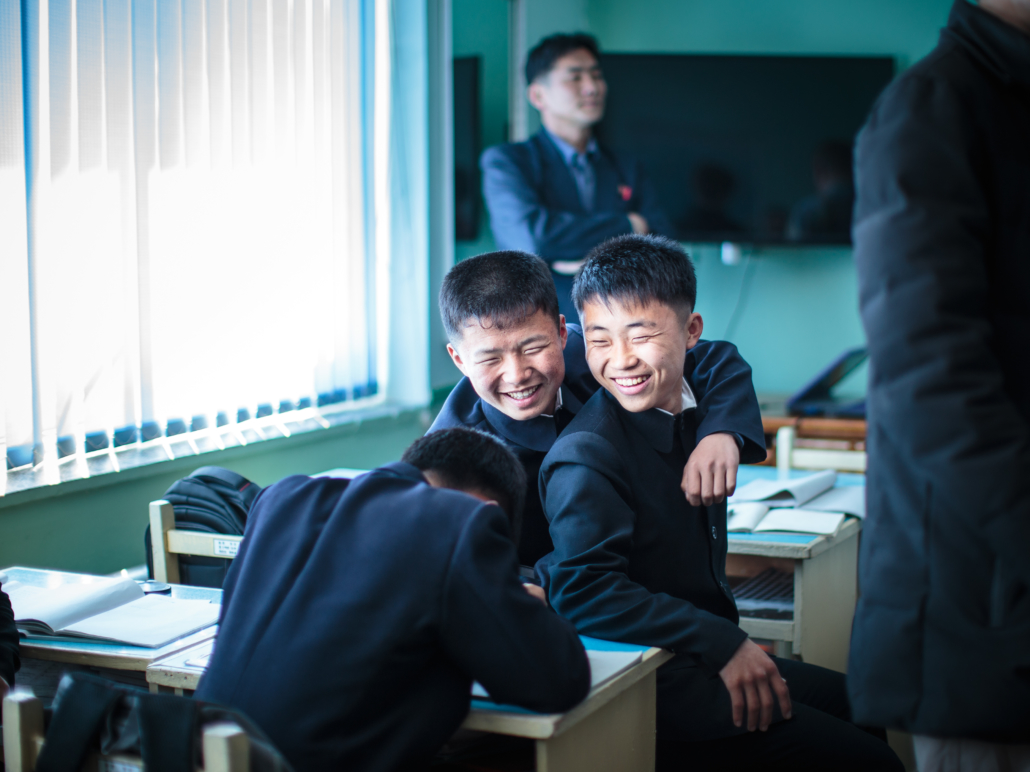10 Facts about Education in North Korea

North Korea is a prime example of a hermit kingdom and one of the last remaining communist states. The centralized ideology and oppressive domestic policy closed the society off from the rest of the world, shrouding itself with mystery. How is it possible for the Kim dynasty to maintain its ruling power for so long despite international skepticism? The answer may lie in the careful censorship and indoctrination of the education that shapes the minds of its citizens. Here are the top 10 facts about education in North Korea.
10 Facts About Education in North Korea
- Education in North Korea is free and mandatory until the secondary level. North Korea requires students to attend one year of preschool before enrolling in four years of primary school, known as “people’s school.” Depending on their specialties, the students will proceed to either a regular secondary school or a special secondary school from the ages of 10 to 16.
- The North Korean education curricula consist of subjects in both academic and political matters. Subjects such as the Korean language, physical education, mathematics and arts make up the majority of instruction in people’s school. North Korea devotes over 8 percent of instruction to the teaching of the “Great Kim Il Sung” and “Communist Morality.” The teaching of these political subjects comprises 5.8 percent of instruction when students get to senior middle schools.
- Education in North Korea has claimed the highest literacy rates in the world. There are statistics that claim that all North Koreans over 15 years of age have a 100 percent literacy rate. However, actual statistics might be lower.
- Children learn to love and believe in the godlike virtues of the ruling Kim family as early as kindergarten. By the age of 5, North Korean children devote two hours each week to learning about their leaders. By the time they get to secondary school, students spend six classes per week on the subject. The schools and textbooks often tell outlandish stories about the Kim family to deify them. For example, one story tells of how Kim Il-Sung made grenades with pinecones, bullets and sand. Another story tells of how Kim Il-Sung used teleportation when he annihilated the Japanese.
- A lot of education in North Korea is propaganda. The system indoctrinates citizens into the system and teaches them to idolize the Kim family as revolutionaries. Distortion of history is another means that the government uses to legitimize the dictatorial regime and accentuate the claims of North Korean greatness. With the careful censorship of outside information, it is not difficult for the regime to change contemporary Korean history or to glorify the Kim family.
- Admission to universities is selective and competitive in North Korea. Only students who receive recommendations from their instructors are able to continue their studies at the university level. To receive recommendations, the students must have good senior middle school grades, be from a desirable social class and show high loyalty to the party. Those without recommendations instead go to work in the farms or mines or join the military.
- Students start learning foreign languages in secondary school. The most common language is English and then Russian. As the government deems the textbooks from the United Kingdom and Russia as containing too much “dangerous” information, North Korea uses its own textbooks. However, the quality of education is poor as the textbooks have poor writing and include mistakes. Students learn phrases such as “Long live Great Leader Generalissimo Kim Il-sung” before “Hello, how are you?”
- Education in North Korea continues even for adults. In rural areas, North Korea organizes people into five-family teams. Schoolteachers or other intellectuals supervise the people for surveillance and educational purposes. Office and factory workers also have to attend study sessions after work each day for two hours. They have to study both technical and political subjects.
- North Korea has a special purpose school for children from the elite class and gifted children. Depending on their specialties, children enter one of the four types of schools for special purposes. These include the revolutionary school (also known as the elite school), schools for arts and sports, schools for foreign language and schools for science.
- Private tutors or other forms of paying for education in North Korea is technically illegal. The state only trusts itself to properly indoctrinate the young minds into the communist regime. However, since the famine in the 1990s, families have had to provide some type of payment for teachers in order for them to show up to work. This can involve paying money, providing firewood or helping teachers harvest crops. Tutoring has evolved within the grey economy of North Korea as a means for state-school teachers to make ends meet. The regime is willing to turn a blind eye as long as the teachers are not too ostentatious about it.
These top 10 facts about education in North Korea shows the important role of education in indoctrinating citizens and instilling in them unconditional loyalty to the regime. As long as education in North Korea continues to be this way, it is likely that the nation will continue to suffer from the tyranny and suppression from its great leaders.
– Minh-Ha La
Photo: Flickr
